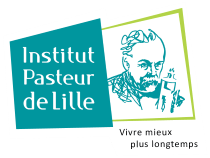Influenza, Immunity and Metabolism
INSERM U1019 – CNRS UMR9017 – Lille University – CHU Lille – Institut Pasteur de Lille

Presentation
Despite the availability of various vaccines and antimicrobial drugs, viral and bacterial respiratory infections are responsible for high levels of morbidity and mortality worldwide. Ageing and co-morbidities (including chronic metabolic diseases) worsen the outcomes of respiratory infections. Our research group is focusing on two major respiratory pathogens: the influenza A virus and Pneumococcus. Most recently, we initiated a novel program on SARS-CoV-2, the aetiologic agent of COVID-19. Our general objectives are to (i) identify early antiviral and antibacterial defence mechanisms, (ii) define age- and comorbidity-associated factors that predispose to respiratory infections, and (iii) develop new strategies for reinforcing the host’s defence against respiratory pathogens. Our group also has a strong focus on the gut microbiota, which is known to be critical in human health and illness, and on adipose tissue, recently described to play a part during infection. We expect that a better understanding of the gut/lung/adipose tissue axis will be instrumental in conceiving novel treatment options for patients.
Highlights
-
Our group has strong expertise in respiratory infections and innate immunity. We seek to better understand the mechanisms leading to immune dysfunction (in ageing, with comorbidities, etc.) and to devise strategies for controlling viral infections (influenza and SARS-CoV-2) and bacterial infections (Pneumococcus) – notably by targeting the gut microbiota. The group’s results have given it internationally acknowledged stature in this field. The group has recently patented several therapeutic applications in influenza and pneumococcal infections, including compounds produced by the gut microbiota such as short-chain fatty acids (SCFAs; ANR ACROBAT). We have shown that these metabolites attenuate secondary disease outcomes during influenza – including bacterial superinfection (Cell Reports 2020). Pharmacological approaches, prebiotics, and next-generation probiotics are being developed. These notably include bacterial strains selected for their strong anti-inflammatory potential and their ability to produce SCFAs in symbiosis with specific fibres.
-
Obesity, which corresponds to excessive white adipose tissue expansion, is one of the strongest reported risk factor for severe respiratory infections, questioning the role of adipose tissue in the pathophysiology of these diseases. We recently developed animal models in order to probe the associations between obesity, lung inflammation, and viral and bacterial infections. We recently reported that influenza infection induces persistent alterations in whole-body glucose metabolism, and alters white adipose tissue’s inflammatory and metabolic functions, mostly characterized by the occurrence of brown-like adipocytes in the tissue (Commun Biol 2020). The mechanisms involved in white adipose tissue browning are currently under investigation in young adult and aged mice (CPER CTRL 19 FEDER DESTRESS-Flu).
Transversal program
 Impact of age-related dysfunction of the circadian cycle on innate immune defenses against respiratory infections Impact
Impact of age-related dysfunction of the circadian cycle on innate immune defenses against respiratory infections Impact
We are characterizing the impact of ageing on respiratory infections. We have a particular interest in the link between cellular senescence and respiratory infection (ANR INFLUENZAGING and SENOCOVID). In collaboration with INSERM unit U1011 (H Duez/B. Pourcet), our data in elderly mice indicated links between the circadian oscillator, lung dysfunction, and altered antibacterial defences in the lung. We hypothesize that the uncontrolled expression of clock genes in aged lungs might impair innate immunity and thus result in defective antibacterial defences (CPER CTRL 19 FEDER and ANR DREAM).
Members
François TROTTEIN
DR1 CNRS, Head of the team I2M
ORCID number : 0000-0003-3373-1814
Corinne GRANGETTE
DR Institut Pasteur de Lille, Leader of the axis « pro and prebiotics »
ORCID number : 0000-0003-2398-448X
Isabelle WOLOWCZUK
DR2 CNRS, Leader of the axis « comorbidity »
ORCID number : 0000-0001-6692-6904
Lucie DERUYTER
Technician, University of Lille
Séverine HEUMEL
Technician, Institut Pasteur de Lille
Cyril ROBIL
Engineer, Institut Pasteur de Lille
Ozmen ÇOBANOGLU
PhD student (fellowship Marie Sklodowska-Curie) (University of Lille)
Fabiola SILVA ANGULO
Post-doc (Institut Pasteur de Lille)
Emma BOGARD
PhD student (University of Lille)
Lou DELVAL
Thesis (University of Lille)
Loïc CHOLLET
Engineer, Institut Pasteur de Lille (fixed term contract)
Publications
Paget C, Deng S, Soulard D, Priestman DA, Speca S, von Gerichten J, Speak AO, Mallevaey, T, Pewzner-Jung Y, Futerman AH, Faveeuw C, Platt FM., Sandhoff R and Trottein F (2019).
Mammalian ganglioside species with specific ceramide backbones activate invariant Natural Killer T cells.
Plos Biology 17(3):e3000169.
Sencio V, Barthelemy A,Tavares LP, Gomes Machado M, Soulard D, Cuinat C, Noordine ML, Salomé Desnoulez S, Deryuter L, Foligné B, Wahl C, Thomaz Viera A, Paget C, Milligan G, Ulven T, Wolowczuk I, Faveeuw C, Le Goffic R, Thomas M, Ferreira S, Mauro M Teixeira MM and Trottein F (2020).
Gut dysbiosis during influenza contributes to pulmonary pneumococcal superinfection through altered short-chain fatty acid production.
Cell Reports. 30(9):2934.
Ayari A, Rosa-Calatrava M, Lancel S, Barthelemy J, Pizzorno A, Mayeuf-Louchart A, Baron M, Hot D, Deruyter L, Soulard D, Faveeuw C, Sencio V, Le Goffic R, Trottein F and Wolowczuk I (2020).
Influenza A virus infection rewires energy metabolism and induces browning features in adipose cells and tissues.
Communications Biology 4;3(1):237
Sokol H, Contreras V, Maisonnasse P, Desmons A, Delache B, Sencio V, Machelart A, Brisebarre A, Humbert L, Deryuter L, Heumel S, Dereuddre-Bosquet N, Menu E, Ho Tsong Fang R, Lamaziere A, Brot L, Wahl C, Oeuvray C, van der Werf S, Ferreira S, Le grand R and Trottein F (2020).
SARS-CoV-2 infection in nonhuman primates alters the composition and functional activity of the gut microbiota.
Gut Microbes 3(1):1-19
Sencio V, Machelart A, Robil C, Benech N, Hoffmann E, Galbert C, Deryuter L, Heumel H, Hantute-Ghesquier A, Flourens A, Brodin P, Infanti F, Richard V, Dubuisson J, Grangette C, Sulpice T, Wolowczuk I, Pinet F, Prévot V, Belouzard S, Briand F, Duterque-Coquillaud M, Sokol H and Trottein F (2022).
Alteration of the gut microbiota following SARS-CoV-2 infection correlates with disease severity in hamsters.
Gut Microbes 14(1):2018900
Keywords
Team contact
François Trottein
Head of the team « Influenza, Immunity, Metabolism »
françois.trottein@pasteur-lille.fr
03 20 87 78 85
